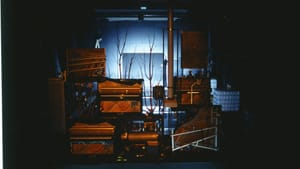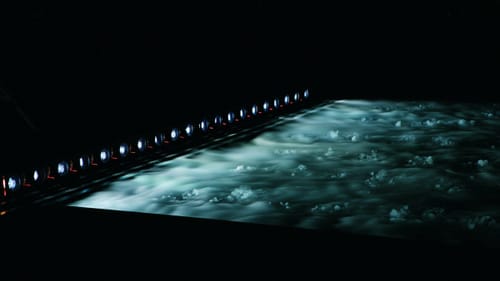Stay in the Loop
BSR publishes on a weekly schedule, with an email newsletter every Wednesday and Thursday morning. There’s no paywall, and subscribing is always free.
When are things not things?
Philly Fringe 2018: Heiner Goebbels’s ‘Stifter’s Dinge’

Can you create a theater piece without people? That is the question from prolific German composer and director Heiner Goebbels and his longtime collaborating designer, Klaus Grünberg. Their answer, Stifter’s Dinge (German for "Stifter’s Things"), was born in the works of a 19th-century landscape painter and novelist.
Adalbert Stifter (1805-68) wrote glacial prose virtually without plot, filled with repetitive description. He focused on phenomena and non-human things that can’t be named or categorized. The show’s exceptionally detailed program notes credit Thomas Mann with the observation that Stifter’s writings were filled with “the sensationalism of boredom.”
Meet Stifter
Stifter’s work is not well known outside Germany, but Goebbels (forced to read him as a student) found that the boredom his prose engendered actually heightened the awareness of what he was describing. As painter and writer, Stifter’s sensibility was anchored in the Bohemian landscape, but he had a dual personality: part mild-mannered school inspector, part artist and introspective philosopher.
Creator and director Goebbels has crafted that dichotomy into this complex, haunting performative installation. Stifter was “concerned with what the things demanded for themselves,” and this production is filled with phenomena that come alive, with help from Grünberg’s set, light, and video design.
Boxes, pianos, and ponds
This is a non-linear work, though it has a dramatic force that increases throughout its 70 minutes. Seeking refuge from Friday’s driving rain, the audience entered a shadowy Navy Yard warehouse to see black chairs on black risers. Three large illuminated translucent boxes are set beside three large illuminated ponds. At the far end of the room is a looming and shadowy sculptural panel, with five just-visible “prepared” pianos.
The room is filled with sounds that straddle the aural space between mechanical and natural, and sights that never rest. Things move and morph, happen and don’t happen. Lines of light and floating scrims move and change. Images go from background to foreground and back again. There are moody voiceovers in several languages.

The massive piano-sculpture, which sounds friendly at first, glides slowly forward to menace the audience, and then tamely recedes. The pools of water swirl, dance, bubble, reflect, and become eerily alive. There is chanting, the sound of ice shards breaking, buzzing drone-like overtones, and an almost constant thrumming of resonant bass pitches.
Evident invisible hands
Stifter’s Dinge has been almost continually on tour since it premiered in 2007. At first the show seems almost frivolous, with its tinkling pianos and huffing and puffing pipes, but that is how Goebbels draws the audience in as his vision overtakes. It’s disingenuous to say (as the promotional materials do) that there are no musicians or actors peopling this work. Though mechanized in many ways, the evening is very much an always-evident product of human hands.
The pianos may be self-playing, but Goebbels wrote that evanescent music. Two men in black appear, filling the ponds with water and sprinkling them with sand. And there are voiceovers — especially a long descriptive passage that must be from Stifter’s work — that bring real people into the room.
Magician that he is, Goebbels manipulates everything (even the “peopled” elements) to become Stifter’s “dinge,” those non-human protagonists with a visceral life. He plays with time, expectations and perception, and through forced observation and personal response, the audience experiences philosophy made tangible.
Though Stifter’s Dinge is filled with apparatus and technical wizardry, this evening is also strangely un-mechanized and anthropomorphic. Because the hand of the creator is so evident at every point, in some ways it’s as far from mechanical as you can get. And as the show progresses, part of you wants it to come to some visual and dramatic conclusion. But part of you wants to stay in Goebbels’s mysterious world without end.
What, When, Where
Stifter’s Dinge. By Heiner Goebbels, produced by Théâtre de Vidy. Through September 9, 2018, at the Philadelphia Navy Yard, 1120 Flagship Drive, Philadelphia. (215) 413-1318 or fringearts.com.
Sign up for our newsletter
All of the week's new articles, all in one place. Sign up for the free weekly BSR newsletters, and don't miss a conversation.

 Gail Obenreder
Gail Obenreder